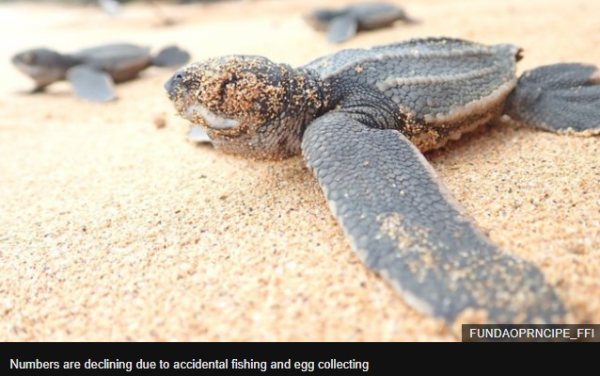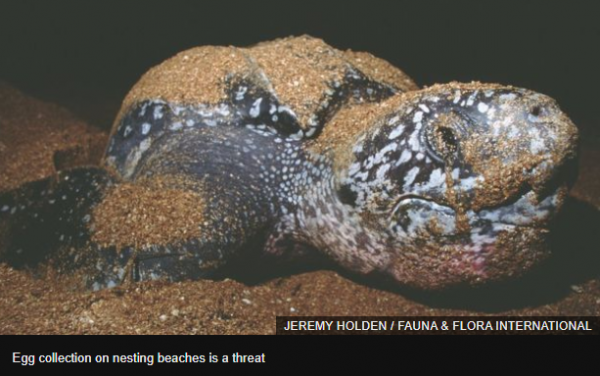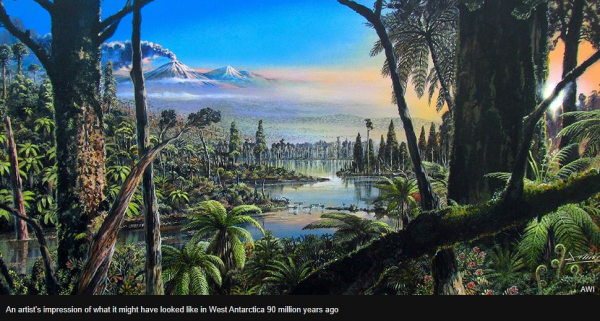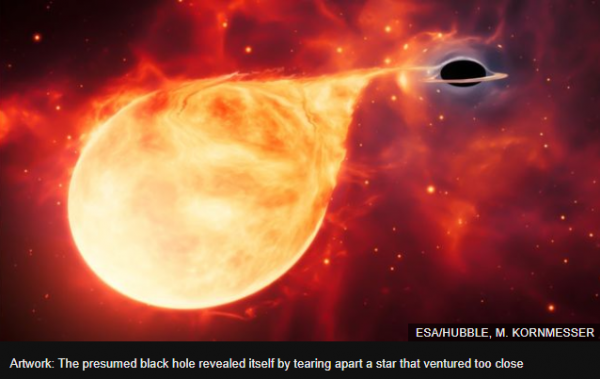-
Posts
20,849 -
Joined
-
Last visited
-
Days Won
49
Everything posted by CaaC (John)
-
I can't say if I have had it or not but I did go through the sore throat, headaches, breathing, sweating and my body aching a bit for a few days but I just dug in taking my tablets as per normal, using my asthma & COPD pumps, mentally bucking myself up and using some cough mixture we have for my sore throat but I feel 10 times better now and feel like I did before it hit me. The wife and daughter were worried about me as they knew I had landed in the hospital with a collapsed left lung and had to have an operation to put it right, I was scared to give a little cough as the wife would suddenly start staring at me asking if I was ok, but I am fine now lung wise, I only get a dull pain on my left-hand side when I take my daily heart & water tablets which then disappears after a couple of minutes. I can't sleep at the moment as I have more or less been snoozing on the sofa off and on all day due to isolating myself so I will stay awake for now and do some reading until my tablets are due around 04.30/05.00, take them and head off to bed.
-
The horrible thing to us is as I have mentioned is the lady across the corridor of our block of flats we have known the couple since we moved in here 14 years ago has just found out she has cancer and has not long to go, the wife broke down in tears when her hubby told her and Liz want's to give her a kiss and a cuddle but she can't do that just yet until the isolation period is over with. The wife has not been outside now for 3 weeks but I told her that I don't think a kiss and a cuddle with old Evalyne would hurt at the moment but the wife is worried in case she makes it worse for Evalyne if she did that, I just hope Evalyne can hang in there for a few months yet because as the way things stand we won't even be able to go to her funeral if she passes away in the next few weeks.
-
Lee Childs - Jack Reacher
-
Fuck cutting your hedge or grass or even paying for it, just call out the goats
-
Delivery guys still doing the rounds, Iceland, Tesco's, Sainsbury's etc, the wife has just got a dish rack she ordered from her catalogue via Hermitage, the bin men and postman are still active so outside you may get the odd jogger or neighbour walking their dogs but the noise comes from the bin men and delivery guys, come mid-night it will be dead quiet and all you will hear around this neck of the woods is a dog barking or male & female foxes calling each other.
-
19 Everyday Things Science Hasn’t Figured Out Science has enabled humans to complete some pretty incredible feats, like land on the moon, for example. But when it comes to common things like laughter or hiccups, scientists still can’t quite figure out the reason behind them. In this article, which was adapted from The List Show on YouTube, we look at everyday things that are still a mystery. 1. It's still not understood why we cry. Crying is still a scientific mystery. Physiologically, it’s clear what’s happening when someone cries. But, it has been more difficult to figure out the evolutionary reason for tears. We know that babies cry to communicate and get attention. So, some experts believe that adults might also cry for social reasons, like to bond or to warn others that something is amiss. 2. The reason we laugh is still unknown. Like crying, we also don’t know why people evolved the ability to laugh, but experts guess it has something to do with communication—and not just that we find something funny. One researcher found that only 20 per cent of laughs he looked at were preceded by anything deemed in any way humorous. It's possible we laugh to let other people know that we’re okay or to bond with each other. A study published in 2016 gave evidence for the latter. Researchers found that an outside observer could distinguish whether laughter was produced between a pair of strangers or a pair of friends. FULL REPORT
-
True, imagine having a bathroom like this. Copper kills coronavirus. Why aren’t our surfaces covered in it? Civilizations have recognized copper’s antimicrobial properties for centuries. It’s time to bring the material back. https://www.fastcompany.com/90476550/copper-kills-coronavirus-why-arent-our-surfaces-covered-in-it
-
10 years to save 'world’s most threatened sea turtle' The largest turtle in the ocean, the leatherback gets its name from its tough, rubbery skin. Migrating long distances a year, the turtle can cross the Pacific Ocean. But with threats like getting tangled in fishing gear, the future for one distinct population looks "dire," say conservation groups. At the current rate of decline, the critically endangered Eastern Pacific leatherback turtle will vanish within 60 years. We have just 10 years left to put measures in place to save it, says a group of conservation scientists and organisations including Fauna & Flora International (FFI). "We have it within our power to protect these animals and enable them to thrive, but all those who have a hand in shaping their future need to work together to do so," said Alison Gunn, programme manager for the Americas and the Caribbean at FFI. Leatherback turtles are found across the world. While considered a single species, populations found in different oceans are reproductively distinct. The Pacific leatherbacks are most at risk of extinction, with both Eastern Pacific and Western Pacific leatherbacks continuing to decline. Key nesting habitats in the Eastern Pacific are in Mexico and Costa Rica, with some isolated nesting in Panama and Nicaragua. Over the last three generations, there has been a greater than 90% decline in the female nesting population. "If this particular population goes they're completely irreplaceable because they're unique to this particular part of the oceans," said Alison Gunn. "There's a lot of conservation action happening right now. We need to increase the collaboration that's already happening in order to ensure that this population is not lost." Key interventions If conservation efforts are targeted and scaled up at high-priority sites, and projects are quickly implemented and maintained, the Eastern Pacific leatherback population can eventually stabilise and increase, according to a population model. Two things must be achieved in the next 10 years to save the Eastern Pacific leatherback: Avoiding the deaths of 200-260 leatherbacks a year caused by "bycatch" of turtles in fisheries Producing 7,000-8,000 more hatchlings a year through better nest protection and improved incubation conditions. Leatherbacks are the largest of all sea turtles, weighing up to 2,000lb (900kg) and reaching over 6ft (2m) in length. The population of leatherbacks in the Eastern Pacific has declined by more than 90% since the 1980s, which qualifies as Critically Endangered on the IUCN Red List of Threatened Species. The study is published in the journal, Scientific Reports. https://www.bbc.co.uk/news/science-environment-52158790
-
Amsterdam under quarantine,
-
Earliest known skull of Homo erectus unearthed by Australian-led team The earliest known skull of Homo erectus has been unearthed by an Australian-led team of researchers who have dated the fossil at two million years old, showing the first of our ancestors existed up to 200,000 years earlier than previously thought. The lead researcher Prof Andy Herries said the skull was pieced together from more than 150 fragments uncovered at the Drimolen Main Quarry, located about 40km north of Johannesburg in South Africa. It was likely aged between two and three years old when it died. Herries, a geochronologist and head of archaeology at Melbourne’s La Trobe University, said he “could not stress how rare it is” to find enough fragments to piece together an intact braincase, especially given juvenile skulls are thin and fragile. “At this age, they are so susceptible to damage,” he said. “It’s so exciting, because our fascination with human evolution is because it’s the story of us, and when we go back this far with a discovery like this, it’s the story of every person living on the planet. “The group this two or three-year-old was a part of could have been the origin of everyone alive today.” He said while there was a lot of disagreement of opinion in the field of archaeology and human evolution, one of the reasons Homo erectus is significant is because everyone agreed: “This is the beginning of us, this is the beginning of our genus.” Herries said it was one of his PhD students working with him at the excavation site, Richard Curtis, who found the fragments in 2015 during his first excavation. Curtis originally thought he had discovered the skull pieces of a baboon. “I was working a bit further up the hill and you know when someone has found something because a big shout goes up the hill, people come up to you with wide eyes, some of my colleagues start dancing,” Herries said. “But still, we find a lot of baboons, and that’s what we thought we’d probably found in this case. So it wasn’t until we cleaned the fragments off and my colleagues at the University of Johannesburg started working to put them back together that it was obvious the skull was way too big and round to be a baboon.” It took them five years to reconstruct, date and identify the skull. “It might seem weird that we can’t tell what is a baboon and what isn’t straight away, but it’s difficult when you have a lot of fragments,” Herries said. One piece of the skull had actually been uncovered by archaeologists in 2007, but because the fragment was found on its own and was very thin, the researchers did not recognise they had found the skull of a hominin. The fragment was placed in a bag and sat in a vault for about a decade until Herries’ team realised it was a piece of their skull, which they named DMH 134. “We can now say Homo erectus shared the landscape with two other types of humans in South Africa, Paranthropus and Australopithecus,” he said. “This suggests that one of these other human species, Australopithecus sediba, may not have been the direct ancestor of Homo erectus, or us, as previously hypothesised.” Herries said the finding was particularly special because in 1924 the Australian anatomist Raymond Dart identified the first fossil ever found of Australopithecus africanus, an extinct hominin closely related to humans and discovered in South Africa. “Nobody believed him at the time because they thought the origin of humans would be in Europe,” Herries said. “And now, 100 years later, DMH 134 will go sit in the same room as that child he identified, further proving what he found. It’s a testament to the work of Australians on human evolution.” The findings were published on Friday in the international journal Science. The archaeologist Dr Ceri Shipton from the Australian National University was not involved in the research but examined the findings, which he said made a good case for Homo erectus and several more species of hominin and other animals emerging at a time of a drying climate 2.3-2 million years ago. “This fits with the idea of our genus being adapted to the savannah and in particular exploiting the big game that is available on grasslands, which they would then butcher using stone tools,” Shipton said. “This find is a long way from the previous earliest Homo erectus in East Africa, confirming Homo erectus was wide-ranging from the outset, which is why their early fossils have also been found in Georgia about 1.8 million years ago, and that they likely reached the island of Flores where they became isolated and evolved into Homo floresiensis.” The geochronologist and quaternary scientist with Macquarie University, Associate Prof Kira Westaway, said recent research into human evolution is increasingly uncovering overlaps between different hominids thought to be separated spatially and temporally. “These well-dated overlaps indicate that the hominid family tree is much more diverse and complex than previously accepted,” she said. “The most fascinating implication from this research, fuelled by the confirmation of an overlap, is that the cause of Australopithecus extinction can be explored with the new potential that there may have been competition from Homo or Paranthropus – this truly is a new and exciting avenue of research.” https://www.msn.com/en-gb/news/offbeat/earliest-known-skull-of-homo-erectus-unearthed-by-australian-led-team/ar-BB12850m
-
Must have been dubbed then, the preview I looked at was sub-titled but I MIGHT have a wee look as one of the scenes was somebody falling from above and landed with a bang and another scene they were all fighting over food.
-
That is a Spanish film, sub-titled. I am not to keen on sub-titled films but it looks weird, I guess you were mainly looking for feet scenes.
-
Friday morning half-awake look, rugged myself up with body warmer and hoody and went for a stroll in the back garden, not a bad morning weather wise but that will do me for the day and now I will go back and hibernate in our little lockdown flat, coffee for now and maybe a wine tonight.
-
FROZEN MUMMIES OF THE ANDES Human Sacrifices in the Sacred Landscape of the Inca Team members survey remains of one of the structures on the summit of Llullaillaco. The Incas are renowned for massive carved stone structures, the construction of thousands of miles of roads, and the establishment of one of the greatest empires in the ancient Americas. However, one of their achievements remains especially impressive. In just over sixty years (ca. 1470–1532 CE), they constructed stone structures on nearly 100 mountains ranging from 17,000 to 22,000 feet (ca. 6,700 m), and they did this in an area spanning 2,000 miles in the Andes. It is the high altitude of so many ruins that has captured the public’s attention, not least because of the great amount of energy, organization, and in some cases specialized techniques necessary for constructing and maintaining structures at such heights. Even people who have lived all their lives at 13,000 feet (ca. 4,000 m)—the highest that permanent villages are normally found— have difficulty in reaching, let alone working at, altitudes over 17,000 feet (ca. 5,200 m). Nowhere else on earth have archaeological remains been found at 22,000 feet and, indeed, this altitude would not even be reached again for four centuries after the Incas. The Incas not only managed to overcome physical challenges, such as climbing in thin air, altitude illness, and route-finding in difficult terrain, they also surmounted a psychological barrier brought on by a fear of the deities inhabiting sacred mountains. The Andean Belief System FULL REPORT
-
Meet the highest mouse on Earth © Marcial Quiroga-Carmona The yellow-rumped leaf-eared mouse might only be a tiny critter, but it can live in some dire conditions. The peak of Llullaillaco, the world’s highest active volcano, stretches some 22,000 feet above sea level and is almost like another planet. The peak straddling Chile and Argentina is one of the driest places on earth, making it the perfect place for mummies to remain intact for thousands of years and not much else. Temperatures regularly drop below freezing, and vegetation is scarce. Very little can live up here, including humans—the highest people live at permanently is 16,700 feet, a good thousand feet below the elevation of the main Everest basecamp in Nepal. These elevations are not what you’d call a livable situation for pretty much anyone. That is unless you are a teensy weensy Phyllotis xanthopygus, the yellow-rumped leaf-eared mouse. In February, researchers discovered one of these tiny mountaineers scampering around the peak of the volcano at nearly 22,110 feet above sea level, breaking a world record for the highest altitude a mammal can live at, which was set by the same species last year. Researchers published their findings on bioRxiv, but the study has yet to be peer-reviewed. The yellow-rumped leaf-eared mouse isn’t your typical house mouse, but they aren’t exactly rare. Jay Storz, the author of the study and a professor of evolutionary biology at the University of Nebraska, says these little fellas are generally found around sea level. Now we know they also venture as high as any mammal has ever been. “These are clearly very adaptable little creatures,” he says. One shocking thing about this discovery is that one of the few creatures that can live all the way up on this volcano is a small, warm-blooded one. Small animals have very high rates of metabolism, Storz says, which allows them to lose heat very rapidly. To survive at such a height, these mice need to be eating a lot and breathing a lot to maintain their body temperature and not succumb to the dire environment at such a high altitude. The next step is discovering what makes this mouse different from other wildlife that lives at high elevations. Large herds of camel-type animals called vicunas and guanacos, as well as foxes, pumas, and funky types of birds still thrive at 14,000 to 15,000 feet above sea level—but only this wee mouse can scale the whole volcano and live to tell the tale. “No one expected these animals to be living at such an extreme altitude. It may be that we’ve really underestimated elevational limits and physiological tolerances of many animals simply because the world’s highest summits, kind of like the deepest depths of the ocean, are still relatively unexplored by biologists,” Storz says. So next time you scale a massive peak, keep an eye out for your littlest companions. They might know the best tricks to make it to the top. https://www.msn.com/en-gb/news/offbeat/meet-the-highest-mouse-on-earth/ar-BB121Ksp
-
'Dinosaurs walked through Antarctic forests' Scientists drilling off the coast of West Antarctica have found the fossil remains of forests that grew in the region 90 million years ago - in the time of the dinosaurs. Their analysis of the material indicates the continent back then would have been as warm as parts of Europe are today but that global sea levels would have been over 100m higher than at present. The research, led from the Alfred Wegener Institute (AWI) in Germany, is published in the journal Nature. It's emerged from an expedition in 2017 to recover marine sediments in Pine Island Bay. AWI and its partners, including the British Antarctic Survey (BAS), used a novel cassette drill-mechanism called MeBo to extract core material some 30m under the seafloor. When the team examined the sediments in the lab, it found traces of ancient soils and pollen and even tree roots. Warning from 'Antarctica's vast forests' The deepest point on land found in Antarctica Journey to the 'doomsday glacier' FULL REPORT
-
Life can be a bastard sometimes, the couple across the corridor when have known for 14 years in Tam & Evalyn, well Evalyne retired 2 years ago, went into hospital to have a gall bladder removed and they found out she has cancer, she has just been told that the cancer is spreading and I don't think she will have long to go, the wife took it badly and broke down as Evaline would always pop into here for a blether and a cup of coffee, Evaline told me should would bloody fight it, I hope to god she does and comes out the winner.
-
A hungry black hole may be cosmic 'missing link' A team of astronomers has found what it says is the best evidence yet for an elusive class of black hole. They say the presumed "intermediate-mass" black hole betrayed its existence by tearing apart a wayward star that ventured too close. These medium-sized objects are a long-sought "missing link" in the evolution of the cosmos. Researchers used two X-ray observatories, along with the Hubble telescope, to identify the object. "Intermediate-mass black holes are very elusive objects, and so it is critical to carefully consider and rule out alternative explanations for each candidate, said Dr Dacheng Lin, from the University of New Hampshire in Durham, US, who led the study. "That is what Hubble has allowed us to do for our candidate." In 2006, Nasa's orbiting Chandra X-ray Observatory and the European Space Agency's XMM-Newton satellite spotted a powerful X-ray flare named 3XMM J215022.4−055108. First-ever black hole image released Cloud may blow black holes' cover New support for black hole theory The nature of the X-ray flare meant that it could be explained by just two scenarios, according to Dr Lin. It was "either a distant (outside our galaxy) intermediate-mass black hole disrupting and swallowing a star or a cooling neutron star in our own galaxy", he told BBC News. Neutron stars are the crushed remnants of an exploded star. What is a black hole? FULL REPORT
- 1,657 replies
-
- space exploration
- astronomy
-
(and 1 more)
Tagged with:
-
The wife on her laptop an hour ago said "look at that, Scotland is going to be the first one to ban all alcohol because of the Coronavirus" I said "I take it you are reading that on your Facebook page darling...April fool", she hasn't mentioned it since.
-
Ok buddy, keeping myself fit for the fight in the Mafia Game coming up, I will be watching you Cliff Managed to go out yesterday I had been stuck indoors for a week and it was driving me round the twist, went up Iceland pensioner hour and picked up what we needed (home delivery) then headed back home, our son has handed his taxi back in for now because of the petrol costs etc and the fares were pretty bad too, he was lucky if he had one fare all-day but he is helping out a lot because he is staying here and will be up early and do some more shopping for us. Still coughing a wee bit but my body has stopped aching, no headaches, I normally get up around 04.30 and take my medicine which includes paracetamol and our daughter has told me to take 2 teaspoons full of honey in the morning she gave us for the grandson, she swears by that and it's quite tasty too, the paracetamol helps a lot.
-
I have asthma and COPD and take pumps for them but every now & then I can get out of breath and I will then do what my doc/nurse & daughter told me to do is sit down, relax and do deep breathing exercises for a couple of minutes and that should help, 4 days ago I woke up with a sore throat, headache and my body aching and thought I hope I have not got this fucker. The wife told our daughter who told the wife to take my temperature the way she showed her with a thermometer we keep here that the daughter gave us for the grandson if needed if we were babysitting, I felt a right prick with the thermometer stuck under my arm and then the wife was reading it out over the phone to our daughter who said it's only slightly over but keep a check and Pops, don't you DARE go out that fucking door and sleep separately from mum tonight.....yes dear daughter, cough, cough.
-
Some novel ones here but I would not try the first one if I was hungry. https://www.dezeen.com/2020/02/17/alternative-coronavirus-masks-max-siedentopf/
-
The Prodigy (2019) classed as a horror/thriller, not bad and the wife liked it a lot more than me, I have seen better horror/thrillers. 7/10
-
-
Great news buddy and take care.





















.thumb.png.30c04cc9f5cb090f3c269ebd68371972.png)